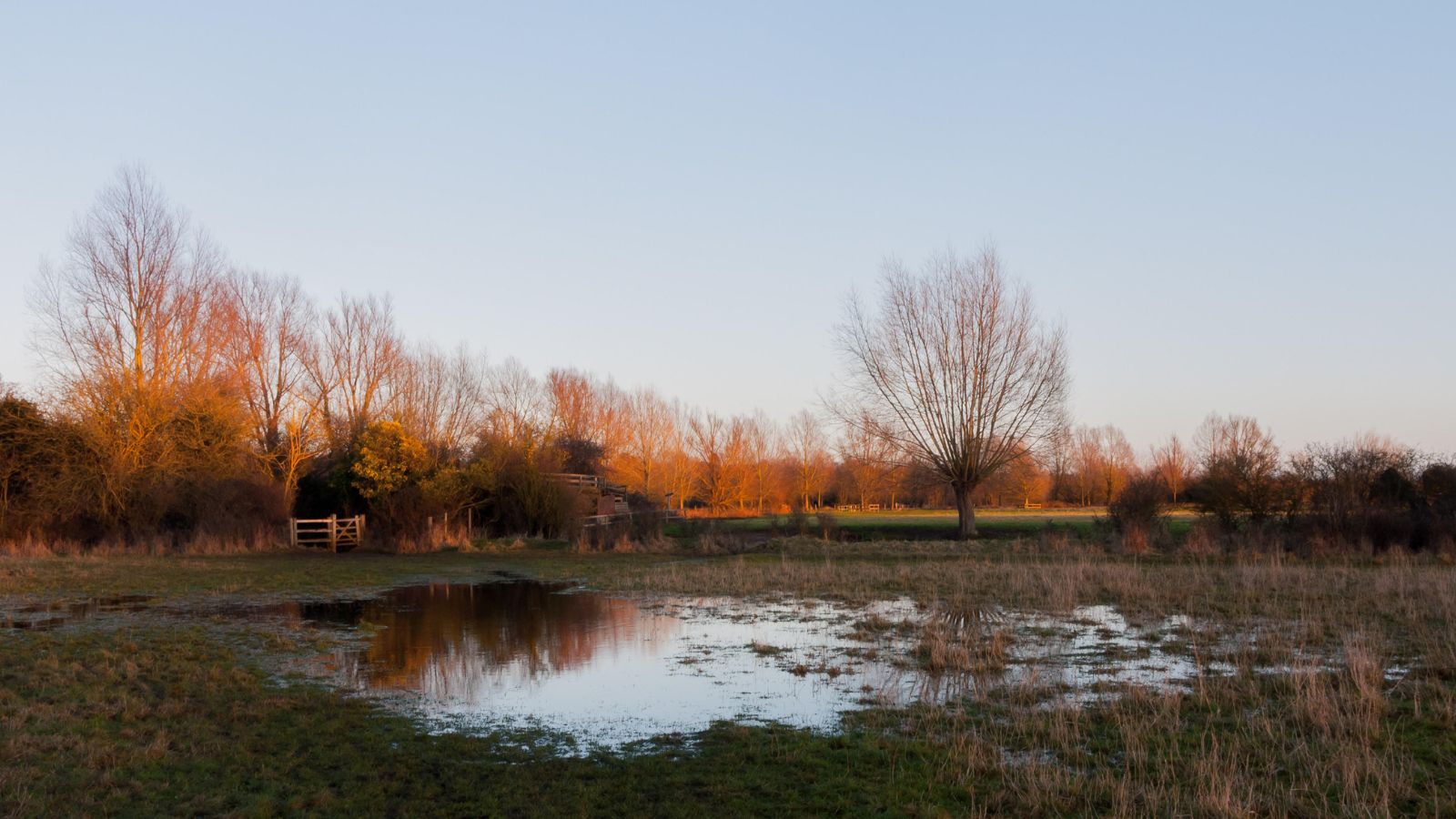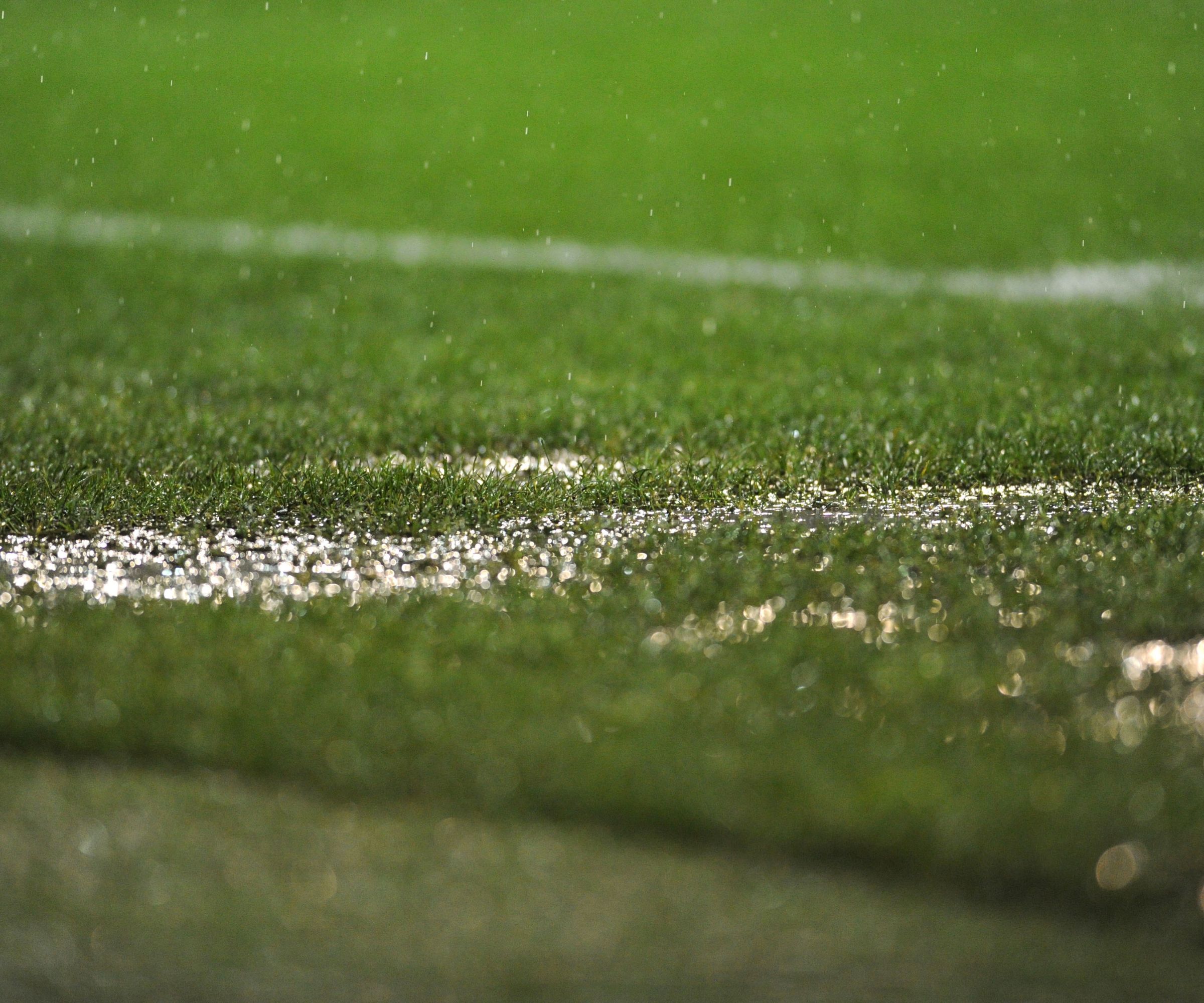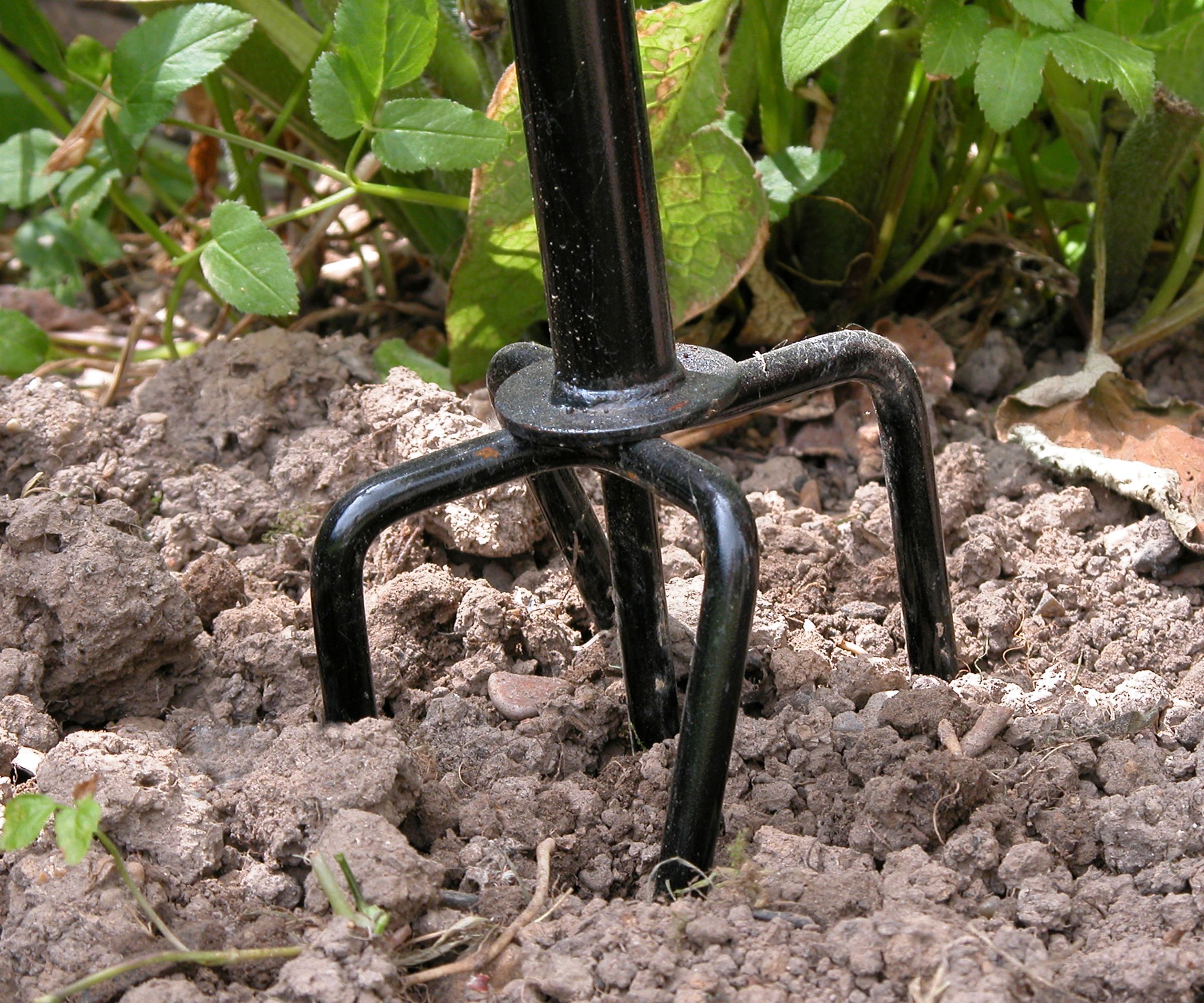How to fix a waterlogged lawn – expert tips to rescue your garden
Save your lawn and fix waterlogging with this expert advice


After periods of very heavy rain, many gardeners are left wondering how to get rid of a waterlogged lawn to protect their grass and maintain their garden.
While getting rid of a waterlogged lawn is not necessarily easy, there are a few clear steps to take to protect your backyard landscaping ideas from ruin and your grass from dying. Using these expert tips, however, can help to get rid of and prevent waterlogging so that you can make your lawn green and thick once again.
So, if you notice the common clues your lawn is in trouble such as yellowing patches in your grass, puddles of surface water, or excess mud, act quickly to prevent further irreparable damage.
How to fix a waterlogged lawn

‘In the event of long periods of heavy rain, the water table in your garden will rise, preventing it from draining away, and within no time at all, you've got big puddles in your garden drowning your plants,’ says William Mitchell of Sutton Manor Nursery. ‘This can cause a number of problems for your garden including an increased chance of unwanted plants like lichens and liverwort.’
To drain and fix a waterlogged lawn it is important to ensure that nobody walks on the affected areas. Movement on the soil can make the problem worse, therefore, making it more difficult to solve. Instead, wait for as much water to evaporate as possible, especially if the rain is coming to an end. If this is not an option, try to gently redistribute the collecting water to other less waterlogged areas of your garden or nearby drain with a broom.
1. Aerate your soil
‘Aerating your garden lawn can help to improve drainage and will add air into your soil which will improve the conditions for the grassroots to live in,’ explains William. ‘This can be accomplished by using a hollow tine aerator or spiking the lawn with a garden fork or aerator shoes. This will help the lawn to recover more quickly by keeping the soil loose and drawing out moisture.’
When aerating your soil, you should aim to create holes a minimum of one to two inches deep, but the deeper the better. A hollow tine aerator will remove plugs of soil to allow the majority of water to drain through to the lower, more compacted layers of soil and drain the surface water.
Design expertise in your inbox – from inspiring decorating ideas and beautiful celebrity homes to practical gardening advice and shopping round-ups.
2. Use a moss killer and fertilizer to restore your lawn
‘A waterlogged lawn will allow moss to grow and should be treated with a moss killer to prevent it from taking over your garden and allowing the lawn to thrive,’ continues William. ‘We suggest using fertilizer during the spring to help the grass recover from a wet winter.
‘By using a fertilizer, the grass root system will also develop into a stronger network, which should make it more capable of withstanding future waterlogging.’
One of the best lawn repairing tips is to use a lawn feed in the fall months to promote good root growth before the heavy rains come through winter.
If your lawn has become too damaged from waterlogging, you may need to consider overseeding your lawn in the fall to restore the damaged patches for the following summer. Use the best fast-growing lawn seed only when the soil has become moist and the majority of the water has evaporated or drained to give your lawn the best chance at reestablishing itself.
What causes a waterlogged lawn?

Waterlogging is a common garden issue caused by water sitting on the surface of the soil, and it can lead to a muddy lawn. 'Waterlogging is often caused by poor soil drainage and compaction. Lawns that are used as walkways, play areas and for parking as well as those with heavy clay soils and low spots,' explains Karen Musgrave of Hicks Nurseries.
What’s more, having grass with poorly developed roots or young grass can also cause waterlogging as they do not have the capacity to absorb water. One way to prevent this is to learn how to plant grass seed correctly, as well as overseeding your lawn to create a thicker, healthier lawn.
How can I prevent my lawn from becoming waterlogged?
Luckily, there are a few ways to try and prevent a waterlogged lawn, from smaller maintenance tasks to larger investment projects.
1. Dig a French drain
'If your garden lawn is so badly damaged by excess water then it may be time to consider installing a French drain,’ suggests William. ‘However, this will likely involve professionals, heavy machinery, and some upheaval to the garden.
‘By installing a french drain (or any drainage system), surface water can be diverted away from the problem area. To further improve the results, you may want to have new top soil and turf laid following the installation of your French drain’
2. Change your soil type
Lawns with particularly dense soils such as clay-rich soils will have slower draining than lighter soils – often not allowing water drainage at all. If possible, change the soil type in your garden.
This can be a difficult process, so consider improving the existing soil structure by adding organic material such as compost. Although putting sand on your lawn can have its drainage benefits on lighter soils, avoid adding lawn sand to clay-heavy soils as this can make the problem worse.
3. Level out the ground
If you notice that waterlogging is only happening in certain areas of your lawn, it may be due to uneven ground. Water may not have time to absorb into higher areas of ground in your garden if this is the case, so consider leveling out your lawn to disperse the water equally and allow for even drainage.
4. Consider adding walkways to your garden
Compaction is a leading cause of water logging, but it can be easily avoided by avoiding walking frequently across your lawn. 'Use paved walkways instead of walking across the lawn and stay off the grass when it is wet to reduce compaction,' recommends Karen.
5. Regularly aerate your lawn
By regularly aerating your soil, you will allow air deeper into the ground allowing for plenty of drainages. If you are concerned about aerating ruining the look of your lawn in the short term, you can reseed the area and create a thicker, greener lawn, making it an ideal long-term solution.
If your lawn is particularly susceptible to waterlogging, consider spiking the soil every few years in the fall months to prevent water build-up over the winter.
You can naturally aerate your soil by watering infrequently and deeply throughout the year, adds Karen. 'This encourages grass roots to grow deeper, naturally aerating the soil.'

How do I put drainage in my soil?
There are a few ways to add drainage to your garden soil. The easiest method is to prick your lawn with holes that run a minimum of one inch deep although deeper holes will work even better. Once you have filled these holes with a draining material such as horticultural sand, surface water will be able to flow more freely to deeper compacted layers of soil and prevent water logging.
Will grass grow in waterlogged soil?
Grass can continue to grow in waterlogged soil for a while, but will eventually die off if left submerged for a long period of time. As the water weight exerts pressure on the ground soil it compacts the healthy pockets of air beneath, causing your plants to rot.

Chiana has been at Homes & Gardens for two years and is our resident 'queen' of non-toxic living. She spends most of her time producing content for the Solved section of the website, helping readers get the most out of their homes through clever decluttering, cleaning, and tidying tips. She was named one of Fixr's top home improvement journalists in 2024.